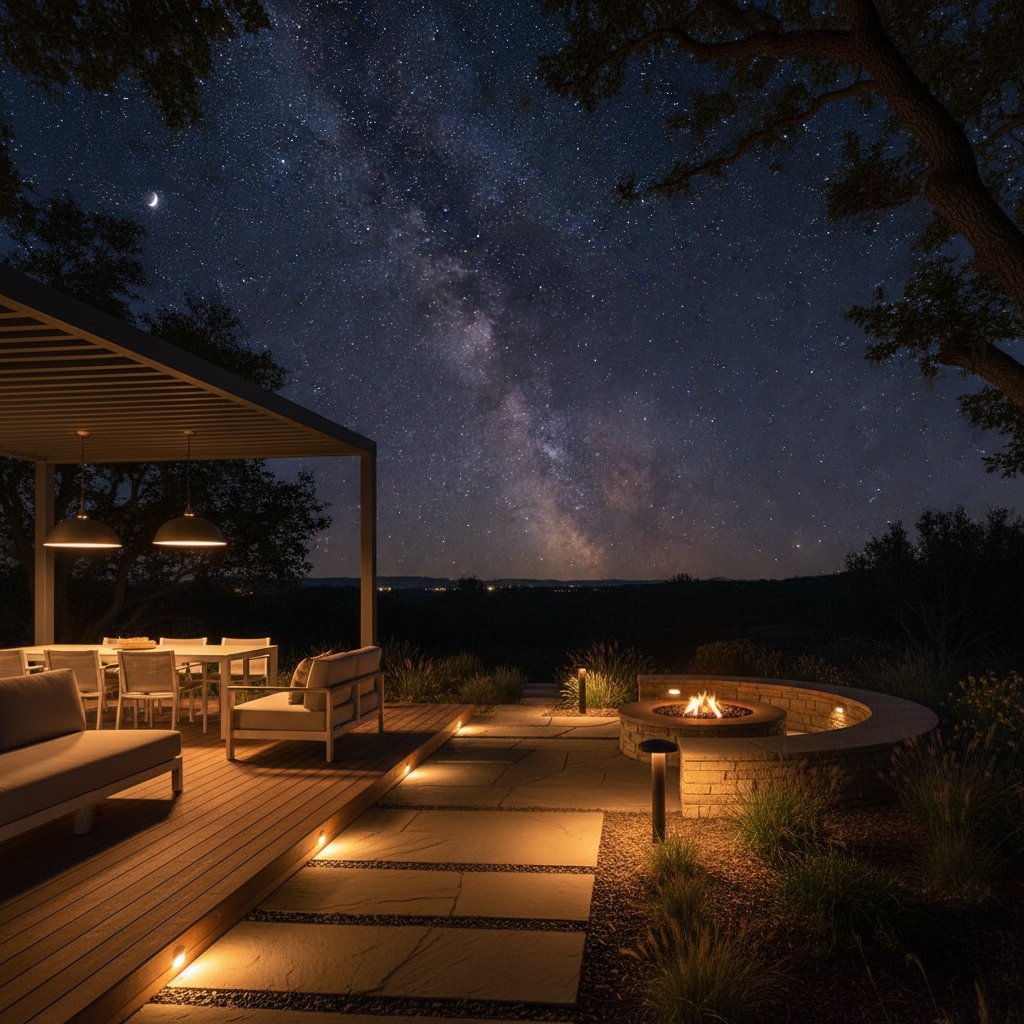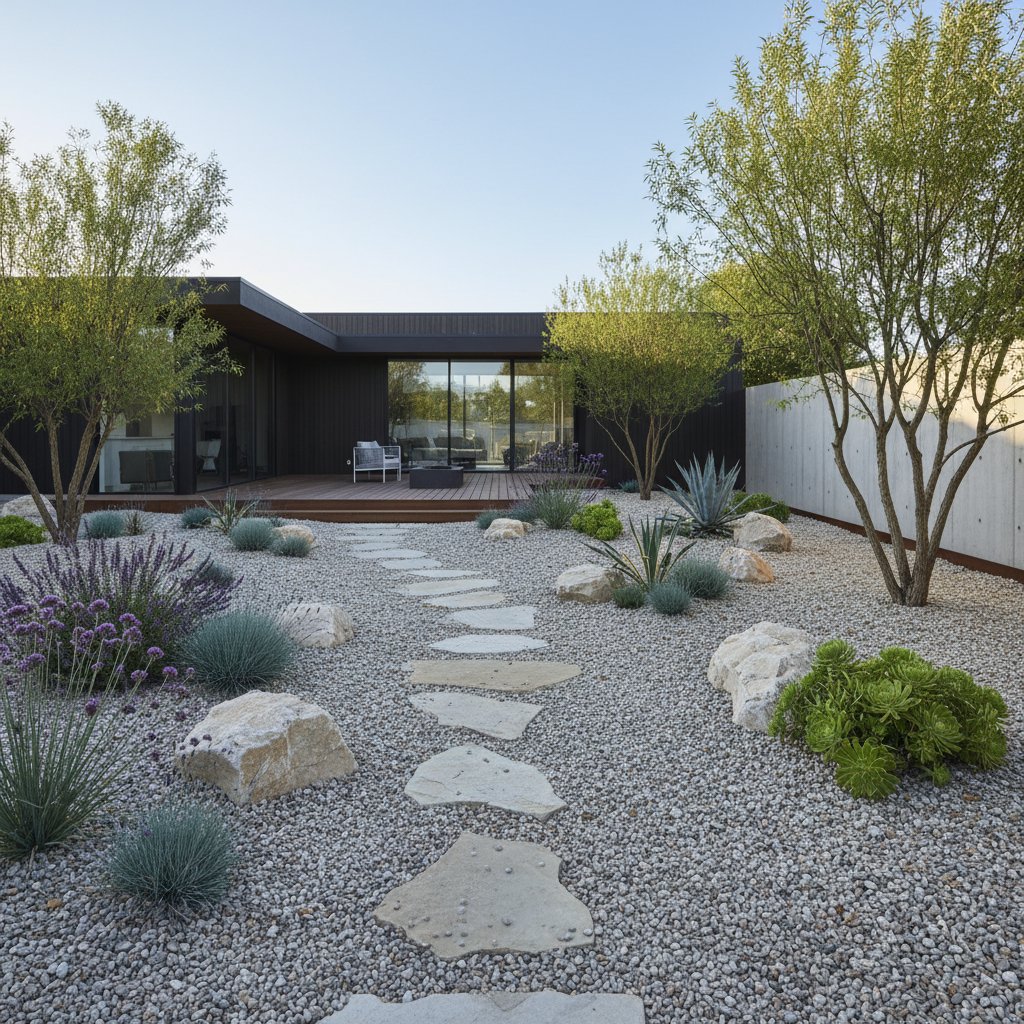The Benefits of Dark Sky Design for Evening Outdoor Spaces
Homeowners often notice that standard outdoor lighting creates an unnatural brightness after dark. Harsh glare from unshielded fixtures can obscure the stars and disrupt the peaceful ambiance of a yard. Dark sky design addresses these issues by promoting controlled, downward-directed illumination that enhances safety and beauty without compromising the night environment.
This approach draws from international efforts to combat light pollution, which impacts ecosystems and human health. By selecting appropriate fixtures and placement, individuals can transform their properties into welcoming retreats. The result is a balanced outdoor area that invites relaxation and appreciation of natural darkness.
Core Principles of Dark Sky Design
Dark sky design prioritizes minimizing upward light escape and excessive brightness. Fixtures feature shields or hoods that focus beams on intended surfaces, such as pathways or seating zones. Warmer color temperatures, around 2700K to 3000K, mimic natural twilight and reduce visual strain.
Light pollution arises from fixtures that scatter light indiscriminately, affecting bird migration, insect behavior, and human circadian rhythms. Compliance with dark sky standards involves using full-cutoff or fully shielded lights certified by organizations like the International Dark-Sky Association. These choices ensure illumination serves practical needs while safeguarding nocturnal habitats.
Implementation begins with understanding local regulations, as some communities mandate dark sky compliant installations. Professional consultation can clarify options tailored to specific landscapes. Overall, this method fosters sustainability alongside visual appeal.
Evaluating Existing Outdoor Lighting
Conduct a nighttime inspection to identify inefficiencies in current setups. Walk the property and observe areas of over-illumination, such as broad floodlights casting beams skyward. Note glare on windows or paths that hinders visibility.
Consider these key factors:
- Necessity: Does each fixture provide essential safety or accent without excess?
- Direction: Are beams aimed precisely, or do they spill onto neighboring properties?
- Tone: Do cool blue lights dominate, or do warmer hues prevail for comfort?
Document findings with photographs taken at dusk. This assessment reveals opportunities for refinement, like repositioning a spotlight from a tree canopy to ground-level features. Such steps prevent unnecessary energy use and environmental harm.
Developing a Strategic Lighting Plan
Build a plan that layers illumination according to usage patterns. For high-traffic paths, install low-voltage LED bollards spaced 4 to 6 feet apart to ensure even guidance without hotspots. Accent features like sculptures or borders with concealed uplights directed outward from the base.
Select fixtures from reputable brands offering dark sky certification, such as those with bronze or black finishes to blend with landscapes. Integrate smart controls, including dusk-to-dawn sensors, to activate lights only during relevant hours. Budget for initial costs, which range from $20 per path light to $100 for motion-activated wall units.
Incorporate zoning to differentiate areas: brighter near entrances for security, dimmer in gardens for ambiance. Sketch a layout diagram marking fixture locations and beam angles. This purposeful strategy maximizes efficiency and aesthetic impact.
Implementing Lighting Adjustments
Start with targeted replacements to test effectiveness. Swap high-wattage bulbs for 5- to 10-watt LEDs in existing housings, reducing output by up to 80 percent while maintaining functionality. Adjust mounting angles so light cones stay below horizontal planes.
Practical modifications include:
- Installing baffle shields on porch lights to block upward spill.
- Adding frosted glass covers to diffuse harsh spots.
- Programming timers for 4-hour cycles post-sunset.
Test changes immediately after installation by viewing from multiple vantage points, including from inside the home. Monitor wildlife activity to confirm minimal disturbance. Gradual rollout allows fine-tuning based on real-world performance.
Sustaining Effective Illumination Over Time
Regular maintenance preserves the integrity of dark sky installations. Inspect fixtures quarterly for misalignment caused by weather or growth. Clean dust from lenses with a soft cloth and mild soap to sustain light quality.
Adapt to seasonal shifts: shorten branch overhangs that intercept beams, or relocate path lights as sod expands. Upgrade aging components with energy-efficient alternatives every 3 to 5 years. Track energy consumption via utility bills to quantify savings, often 20 to 50 percent lower than conventional systems.
Engage family in upkeep routines to build awareness of sustainable practices. This ongoing commitment ensures the design remains responsive to evolving needs.
Experiencing Enhanced Outdoor Evenings
A refined dark sky setup reveals subtle yard details under controlled light. Gentle path glows lead to gathering spots where conversations flow uninterrupted. Overhead, constellations emerge, fostering a sense of wonder and connection.
Residents report increased time spent outdoors, from evening walks to stargazing sessions. The absence of glare promotes better sleep upon retiring indoors. This harmonious environment not only beautifies the property but also supports broader ecological health.
Cultivating Long-Term Yard Harmony
Dark sky design integrates lighting as an extension of landscape care. As plants mature and hardscapes evolve, revisit the plan to align illumination accordingly. This restraint-based philosophy yields enduring tranquility.
Homeowners discover profound satisfaction in spaces that respect natural cycles. The yard becomes a sanctuary where light enhances, rather than eclipses, the night's inherent magic.



